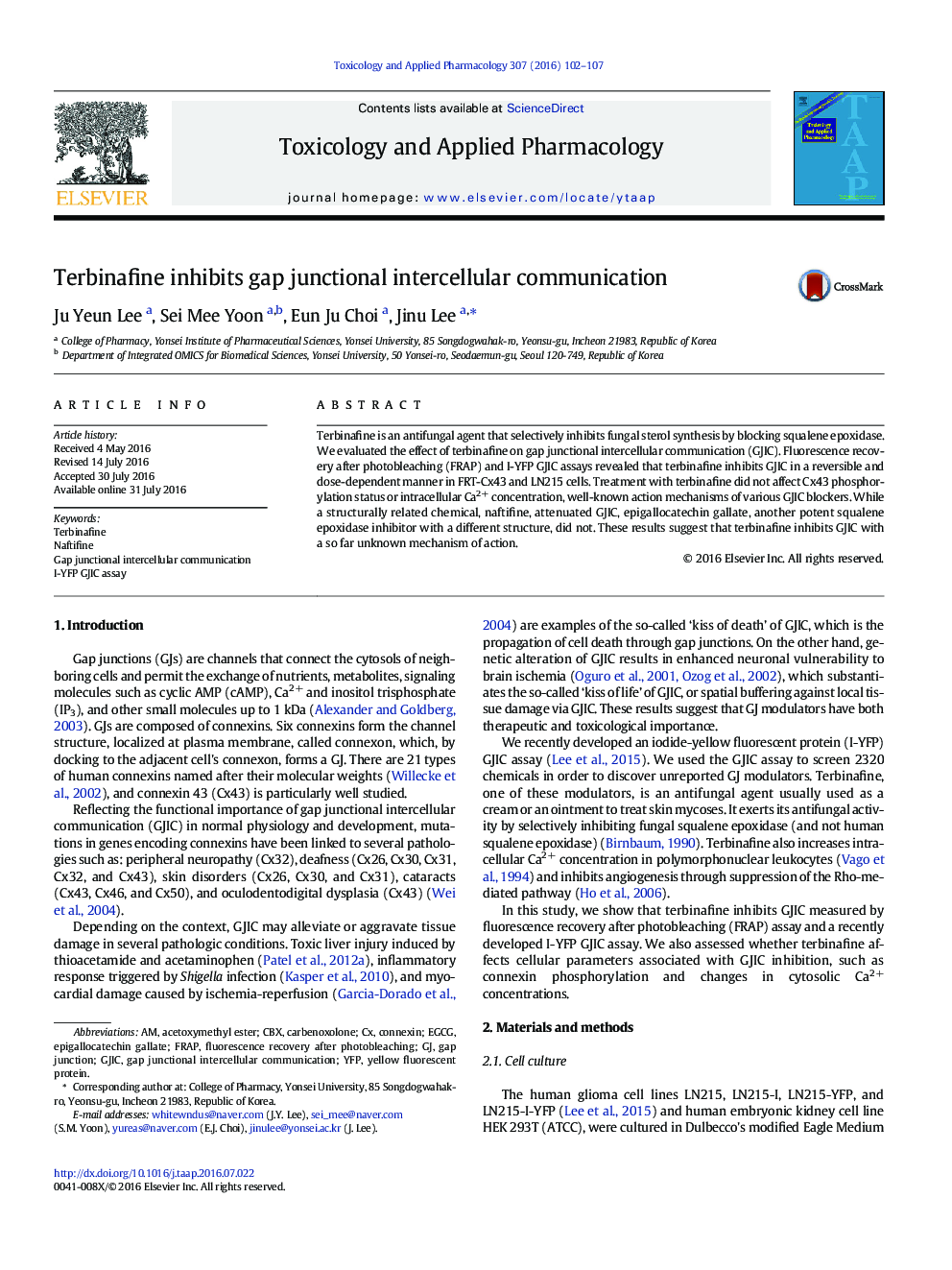| کد مقاله | کد نشریه | سال انتشار | مقاله انگلیسی | نسخه تمام متن |
|---|---|---|---|---|
| 2567994 | 1561155 | 2016 | 6 صفحه PDF | دانلود رایگان |
• In vitro pharmacological studies were performed on FRT-Cx43 and LN215 cells.
• Terbinafine inhibits gap junctional intercellular communication in both cell lines.
• The inhibitory effect of terbinafine is reversible and dose-dependent.
• Treatment of terbinafine does not alter Cx43 phosphorylation or cytosolic Ca2 + concentration.
• Inhibition of squalene epoxidase is not involved in this new effect of terbinafine.
Terbinafine is an antifungal agent that selectively inhibits fungal sterol synthesis by blocking squalene epoxidase. We evaluated the effect of terbinafine on gap junctional intercellular communication (GJIC). Fluorescence recovery after photobleaching (FRAP) and I-YFP GJIC assays revealed that terbinafine inhibits GJIC in a reversible and dose-dependent manner in FRT-Cx43 and LN215 cells. Treatment with terbinafine did not affect Cx43 phosphorylation status or intracellular Ca2+ concentration, well-known action mechanisms of various GJIC blockers. While a structurally related chemical, naftifine, attenuated GJIC, epigallocatechin gallate, another potent squalene epoxidase inhibitor with a different structure, did not. These results suggest that terbinafine inhibits GJIC with a so far unknown mechanism of action.
Figure optionsDownload high-quality image (221 K)Download as PowerPoint slide
Journal: Toxicology and Applied Pharmacology - Volume 307, 15 September 2016, Pages 102–107
